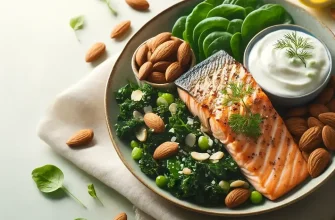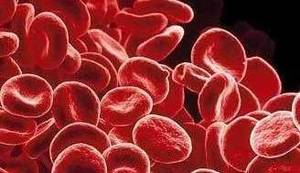Food poisoning is an unpleasant experience, often leaving you feeling weak, dehydrated, and unsure of what foods your body can handle. Once the worst symptoms subside—like vomiting, diarrhea, and stomach cramps—it’s crucial to focus on reintroducing food that’s gentle on your digestive system and helps your body recover.
Common Causes of Food Poisoning in the USA
| Source | Percentage of Cases (%) |
|---|---|
| Raw Chicken | 40% |
| Leafy Greens | 25% |
| Raw Seafood | 20% |
| Eggs | 15% |
| Unpasteurized Dairy | 10% |
This chart displays the common causes of food poisoning in the USA, with raw chicken being the leading source at 40% and unpasteurized dairy contributing to 10% of cases. It highlights key risks to avoid for better food safety.
When to Start Eating?
After food poisoning, your digestive system is sensitive. Start eating only when nausea and vomiting have stopped, and you feel ready to tolerate food. Begin with small portions and gradually increase as your stomach adjusts.
Stage 1: Hydration is Key
Before reintroducing solid food, prioritize hydration:
- Water: Sip small amounts frequently to avoid dehydration. Consistent hydration is essential for replacing fluids lost due to vomiting and diarrhea, which can lead to severe dehydration if not addressed.
- Oral rehydration solutions (ORS): These replenish lost electrolytes and fluids effectively, offering a balanced mix of minerals and glucose that helps restore your body’s natural hydration levels. They are particularly helpful if plain water feels inadequate.
- Clear broths: Provide fluids and mild nourishment without taxing your stomach. Rich in sodium, broths act as an excellent electrolyte source and can give a comforting warmth to your digestive system, easing discomfort.
- Herbal teas: Ginger or chamomile tea can soothe nausea and cramps, providing a natural way to settle your stomach. These teas are also gentle on your digestive system, making them a safe option during early recovery stages.
Avoid sugary drinks, caffeinated beverages as they can worsen dehydration and irritate your stomach.
Effectiveness of Recovery Foods After Food Poisoning
| Food | Effectiveness (%) |
|---|---|
| Water | 95% |
| Bananas | 85% |
| Rice | 80% |
| Clear Broths | 90% |
| Toast | 70% |
This chart highlights the effectiveness of various recovery foods after food poisoning, with water rated highest at 95% and toast at 70%. These choices emphasize gentle, hydrating, and easily digestible options.
Stage 2: The BRAT Diet
Once you’re ready for solid food, follow the BRAT diet:
- Bananas: Gentle on the stomach and rich in potassium, bananas are also a natural source of energy and electrolytes, making them ideal for replenishing nutrients lost during food poisoning. Their soft texture is easy to tolerate even on a sensitive stomach.
- Rice: Provides easy-to-digest carbohydrates that help stabilize blood sugar and offer a quick energy boost. Plain white rice is particularly effective, as it contains little fiber to avoid straining the digestive system.
- Applesauce: Contains pectin, a type of soluble fiber that helps firm up stool and improve digestion. Additionally, it offers a mild sweetness that’s palatable and comforting without overwhelming your taste buds.
- Toast: Plain, dry toast is easy on the stomach and helps absorb stomach acids, reducing discomfort. Opt for white bread rather than whole-grain varieties, as the latter can be harder to digest initially.
The BRAT diet provides essential energy without overwhelming your digestive system.
Stage 3: Adding Gentle Proteins and Veggies
As your recovery progresses, you can introduce:
- Boiled potatoes: These are plain and easy to digest, providing essential energy without irritating the stomach. Ensure they are unseasoned to avoid discomfort.
- Boiled or baked chicken (skinless): A lean source of protein that aids in muscle recovery. Avoid adding spices or oils, as these can upset your stomach.
- Steamed carrots or zucchini: Mild, soft vegetables that supply vitamins without being harsh on the digestive system. Steaming preserves nutrients and ensures easy digestion.
- Plain oatmeal: Provides gentle fiber and energy, helping stabilize digestion. Serve without sugar or milk to prevent irritation.
Stick to bland, non-spicy foods and avoid oils, fats, and seasonings.
Timeline for Reintroducing Foods Post Food Poisoning
| Timeline Stage | Recommended Foods |
|---|---|
| Day 1: Hydration Only | Water, oral rehydration solutions, clear broths, herbal teas |
| Day 2–3: BRAT Diet | Bananas, rice, applesauce, plain toast |
| Day 4–5: Gentle Proteins | Boiled potatoes, baked chicken (skinless), steamed carrots or zucchini, plain oatmeal |
| Day 6+: Transition to Normal Foods | Scrambled eggs, soft cooked vegetables, plain pasta, small portions of regular meals |
This chart outlines the timeline for reintroducing foods post food poisoning, starting with hydration on Day 1 and progressing to normal foods by Day 6 or later. It provides a structured approach to ensure a smooth recovery.
Foods to Avoid
During recovery, steer clear of:
- Dairy products: Can exacerbate bloating and diarrhea. Harm Level: 7/10. Example: Drinking milk after food poisoning may cause severe cramps and loose stools due to lactose intolerance.
- Greasy or fried foods: Difficult to digest. Harm Level: 8/10. Example: Fried chicken can cause stomach pain and prolong diarrhea because of its high fat content.
- Spicy foods: May irritate your stomach lining. Harm Level: 9/10. Example: Eating chili peppers can lead to burning sensations and worsen nausea.
- Raw vegetables or salads: Too harsh on your recovering digestive system. Harm Level: 6/10. Example: Consuming raw broccoli might cause gas and bloating due to its fibrous nature.
- Caffeine and alcohol: Can cause dehydration and irritation. Harm Level: 10/10. Example: Drinking coffee or alcohol can lead to severe dehydration and irritation of the stomach lining, delaying recovery.
Reintroducing Normal Foods
After a few days, once you feel stronger and your digestive system stabilizes:
- Gradually reintroduce regular foods such as scrambled eggs, which are light on the stomach but provide essential protein for recovery.
- Include soft, cooked vegetables like spinach or green beans to introduce vitamins and minerals without overloading your digestive system.
- Try plain pasta or noodles with a small amount of olive oil as a gentle source of carbohydrates that’s easy to digest.
- Stick to small, frequent meals rather than large portions to avoid overwhelming your stomach and to help your digestive system process food more effectively.
- Avoid any trigger foods that may have caused the food poisoning, such as improperly cooked meats or unwashed produce, to prevent a recurrence of symptoms.
Editorial Advice
Food poisoning is a wake-up call to pay close attention to food safety. Properly storing, preparing, and cooking food can reduce your risk in the future. Always wash your hands before eating or cooking and ensure perishable foods are refrigerated promptly. According to Reyus Mammadli, Health Care Advisor, “The road to recovery from food poisoning is paved with patience. Don’t rush back to greasy burgers; your stomach will thank you later.” Take it slow, stay hydrated, and let your body guide you toward full recovery.









